| Article ID | Journal | Published Year | Pages | File Type |
|---|---|---|---|---|
| 2011847 | Pharmacological Reports | 2011 | 9 Pages |
The effects of corticosterone administration lasting for 7 and 21 days were studied ex vivo in rat frontal cortex slices prepared 48 h after the last dose of the hormone. In slices originating from corticosterone-treated animals, the amplitude of extracellular field potentials recorded in cortical layer II/III was increased. Corticosterone administration also resulted in an increase of the mean frequency, but not the mean amplitude, of spontaneous excitatory postsynaptic currents (sEPSCs) in layer II/III pyramidal neurons. These effects were accompanied by a reduced magnitude of long-term potentiation (LTP) of field potentials. In a separate set of experiments, rats were treated with corticosterone for 21 days and additionally with a tricyclic antidepressant, imipramine, beginning on the eighth day of corticosterone administration. In this experimental group, the amplitude of field potentials, the mean frequency of sEPSCs and the magnitude of LTP were not different from the control, indicating that corticosterone-induced modifications of basal glutamatergic transmission and synaptic plasticity were reversed by the antidepressant.
